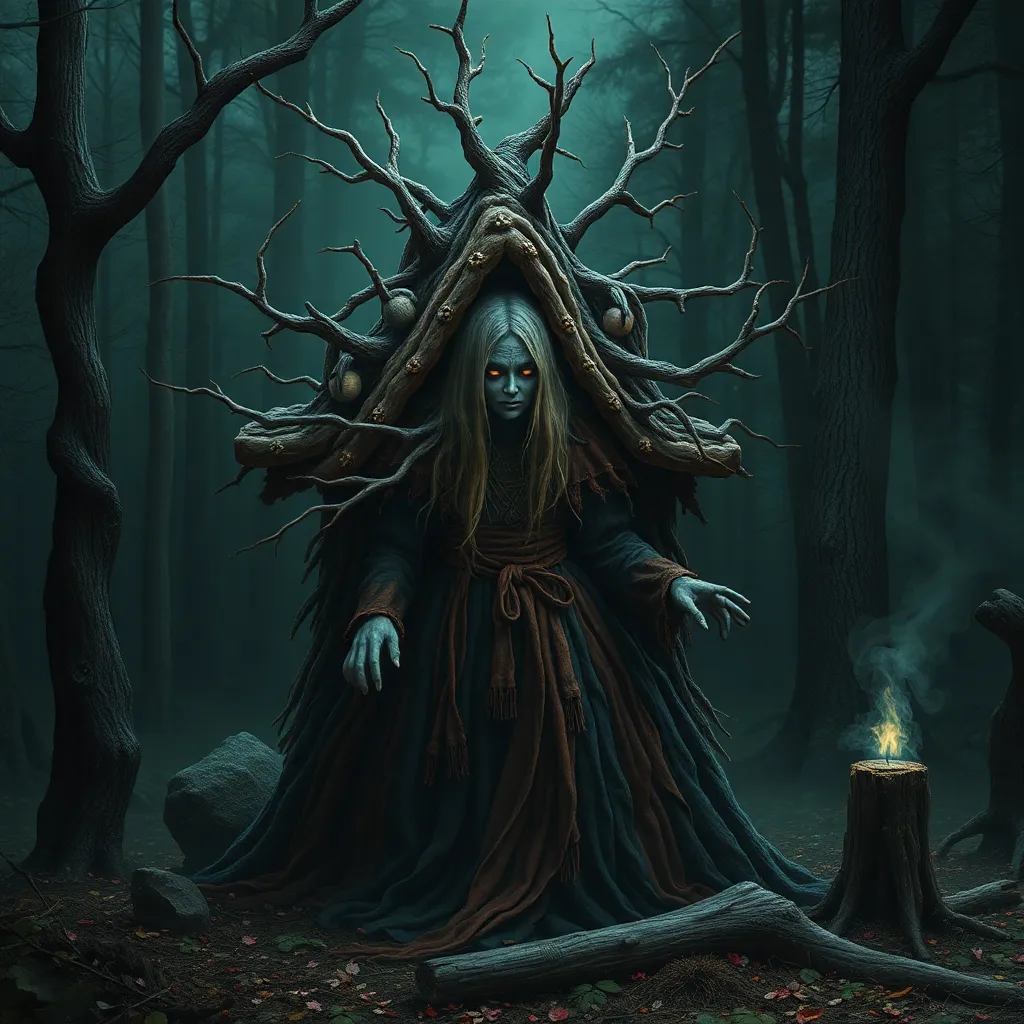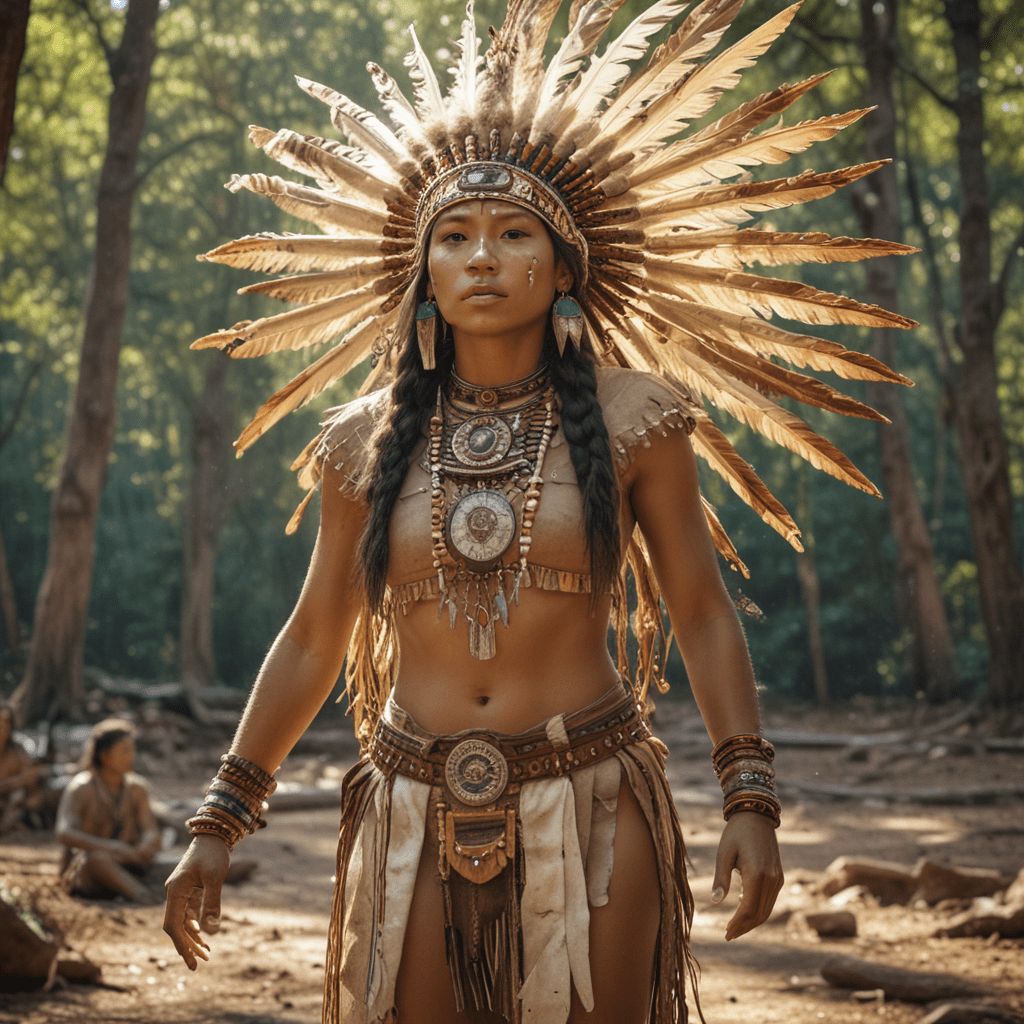Baba Yaga: A Gendered Analysis of the Mythical Figure
I. Introduction
Baba Yaga is a prominent figure in Slavic folklore, often depicted as a fearsome old witch who lives in a hut that stands on chicken legs. Her character embodies a complex blend of malevolence and wisdom, making her a compelling subject for analysis. The significance of gender in mythological studies provides a crucial framework for understanding Baba Yaga’s role and representations across various narratives.
The purpose of this article is to explore Baba Yaga’s character through a gendered lens, examining her dual nature, relationships with other characters, and her evolution in modern interpretations. By analyzing these aspects, we aim to highlight the implications of gender in folklore and the ongoing relevance of Baba Yaga in contemporary society.
II. Historical Context of Baba Yaga
The origins of the Baba Yaga myth can be traced back to ancient Slavic traditions, where she was often portrayed as a supernatural being with capabilities that ranged from benevolent to malevolent. As the folklore spread across different regions, Baba Yaga’s character evolved, influenced by the cultural and social contexts of the societies that told her stories.
Throughout history, folklore has played a key role in shaping societal gender norms. Baba Yaga’s character reflects the tension between the perception of women as nurturing figures and the fear of their potential for malice and power. This duality is essential for understanding the historical context of her myth.
III. The Dual Nature of Baba Yaga
A. Baba Yaga as a Villainess
Baba Yaga is often seen as a villainess in various tales, characterized by her malevolent traits and fearsome reputation. Her characteristics of malevolence include:
- Her cannibalistic tendencies, often preying on lost travelers.
- Her unpredictable behavior, creating an atmosphere of fear.
- Her association with dark magic and the supernatural.
The cultural implications of her fearsome persona suggest a reflection of societal anxieties surrounding powerful women. Baba Yaga embodies the archetype of the witch, a figure often associated with chaos and danger, challenging patriarchal norms.
B. Baba Yaga as a Wise Woman
Conversely, Baba Yaga is also depicted as a wise woman, possessing deep knowledge and understanding of the natural world. Her wisdom is expressed through:
- Her ability to provide guidance to those who seek her out.
- Her mastery of herbal medicine and magic.
- Her role as a guardian of the forest and its secrets.
This portrayal positions Baba Yaga as a symbol of feminine wisdom and agency, challenging the traditional views of women as merely domestic figures. Her knowledge and power enable her to exert influence over the world around her, making her a complex character that transcends simple villainy.
IV. Feminine Archetypes in Folklore
Baba Yaga’s character can be compared to other female figures in mythology, such as the goddess Hecate and the fairy Morgana. Each of these figures embodies different aspects of femininity, from wisdom and guidance to fear and chaos. The archetype of the crone is particularly relevant in Baba Yaga’s narrative, representing the wisdom that comes with age, as well as the societal fears of aging women.
The significance of motherhood and fertility in her narratives is also notable. Despite her fearsome nature, she is often associated with life and death, reinforcing the duality of feminine power. Baba Yaga’s interactions with children and her role in transformations highlight her connection to the cycles of life and nature.
V. Baba Yaga’s Relationship with Other Characters
Baba Yaga’s interactions with other characters in folklore are rich and varied, revealing complex dynamics of power and agency. Her relationships can be categorized into two main types:
A. Interactions with Male Heroes
In many stories, male heroes seek out Baba Yaga for assistance, often underestimating her power. Their encounters typically involve:
- Tests of bravery and intelligence, where Baba Yaga challenges their expectations.
- Negotiations that reveal her cunning and resourcefulness.
- Transformational journeys that alter the heroes’ perceptions of femininity.
B. Dynamics with Female Characters
When interacting with female characters, Baba Yaga’s role often shifts. These dynamics can showcase:
- Rivalry, where younger women must confront her established power.
- Mentorship, where Baba Yaga imparts wisdom to those willing to learn.
- Support, as she sometimes aids female protagonists in their quests.
These relationships highlight the complexity of female interactions in folklore, often reflecting broader societal themes of competition and collaboration among women.
VI. Modern Interpretations of Baba Yaga
In contemporary literature and media, Baba Yaga has undergone significant reinterpretation. She appears in various forms, from children’s books to adult fantasy novels, showcasing a range of portrayals that reflect current societal attitudes toward femininity.
Shifts in her portrayal often align with changing public perceptions of gender roles, as modern interpretations may emphasize her wisdom and strength rather than solely her malevolence. The impact of feminist movements has also contributed to a re-evaluation of her character, positioning her as a symbol of empowerment and resilience.
VII. Gendered Themes and Symbolism
An analysis of gender roles within Baba Yaga’s stories reveals deep symbolism. The forest, often depicted as a mysterious and dangerous place, represents the unknown aspects of femininity and power. Baba Yaga’s hut, which stands on chicken legs, symbolizes the transient nature of home and the duality of domesticity and wilderness.
Furthermore, the themes of transformation and empowerment are prevalent in her narratives. Characters who seek out Baba Yaga often undergo significant changes, suggesting that confronting the complexities of femininity can lead to personal growth and empowerment.
VIII. Conclusion
In summary, Baba Yaga serves as a multifaceted figure in Slavic folklore, embodying both the fears and strengths associated with femininity. Her character challenges traditional gender norms and offers insights into the complexities of female power.
The relevance of Baba Yaga in today’s society is profound, as her tales continue to resonate with contemporary discussions around gender and identity. Future research on gender in folklore can further illuminate the ways in which figures like Baba Yaga reflect and shape societal views on women.


